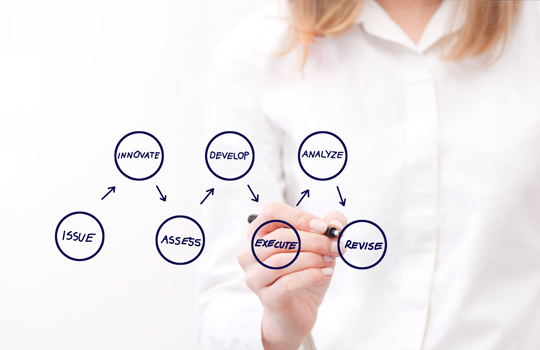Sean Conrad examines three proven ways to foster on the job development for your employees, discussing how to help employees continually develop, monitor goal progress and provide feedback.
Organisations with robust employee development programs have a distinct advantage when it comes to employee engagement, retention and high performance. Even organisations with limited funds to invest in expensive training can benefit from incorporating principles from learning research into on-the-job development. With that said, here are three ways to help employees improve their performance and increase engagement.
Concentrate on the critical
With all the options available, how do you decide where to focus training and development efforts? Begin with assessing development needs: both for the organisation and the employee. The best choice is a combination of what the organisation needs and what the employee wants. Are there key initiatives or changes on the horizon that require different or enhanced skills or knowledge? Are certain competencies needed for the organisation to achieve its goals? Are there critical gaps in employee performance or skills that can be addressed through development? These are good places to focus efforts.
Employees respond best when they know how their learning will contribute to business success and move them towards their own career objectives, so it makes sense to take time to set learning objectives and discuss benefits with employees before assigning development activities.
A common pitfall in choosing development initiatives is to focus on addressing employees’ weaknesses rather than building on their strengths. Of course, if there is a weakness that is a barrier to success and results from a gap in knowledge, understanding or skill, it makes sense to address it through focused development. But employees will be more enthusiastic about development and more likely to utilise it on the job if it plays to their interests, passions and strengths.
Put progress in perspective
Development is far more than a one-time dip in a training program, with the expectation that what is learned there will be remembered – and used – forever. Whether it's a training program, seminar, stretch assignment, demonstration (or whatever form it takes) — learning success is as dependent on what happens before and after the event as it is on what happens during it.
"Take errors and failures in perspective — they can be great learning opportunities if managers help learners figure out how to correct their errors and resolve issues."
As mentioned above, set specific goals and expectations with employees before the learning event about how they are expected to apply their new skills and knowledge, and how it fits in with their own and the organisation's goals.
After the event, create a safe learning environment where employees have the opportunity to practise on the job until their new skills become embedded. Especially when employees are learning new procedures or digesting complex information, you may need to break learning into manageable bites and encourage movement toward the goal in small steps.
A safe learning environment is a place where barriers to success are removed and mistakes can be made. Take errors and failures in perspective — they can be great learning opportunities if instead of focusing on failure, managers help learners figure out how to correct their errors and resolve issues.
Foster frequent feedback
Every kind of system needs feedback in order to calibrate and improve performance. Performance coaching can even be a powerful development technique by itself. When coupled with other forms of learning activities such as training, performance coaching is an essential tool in helping employees turn their new learning into practical and well-honed competencies. Make sure managers focus on the specific area that is targeted for development, and that they are familiar with how to observe, provide constructive feedback and coach for improved performance.
Here are a few things to keep in mind when providing feedback:
- Give the feedback as soon as possible after observing the performance
- Give positive feedback more frequently than negative feedback
- Describe in specific terms the performance that was observed and how it compares with expected performance
- Be specific about what changes, if any, should be made to meet expectations
- Check to make sure the employee understands what needs to be done
- Look for improvements and reinforce them with positive feedback until the new skills are established
By incorporating proven learning techniques before, during and after development activities, organisations can effectively help employees increase their skills, improve their performance, contribute to organisation success and prepare to reach their own career goals.
At Halogen Software, Sean Conrad helps companies of all sizes improve their annual performance review process. He’s a regular contributor to Halogen’s blog, as well as numerous industry blogs and publications









